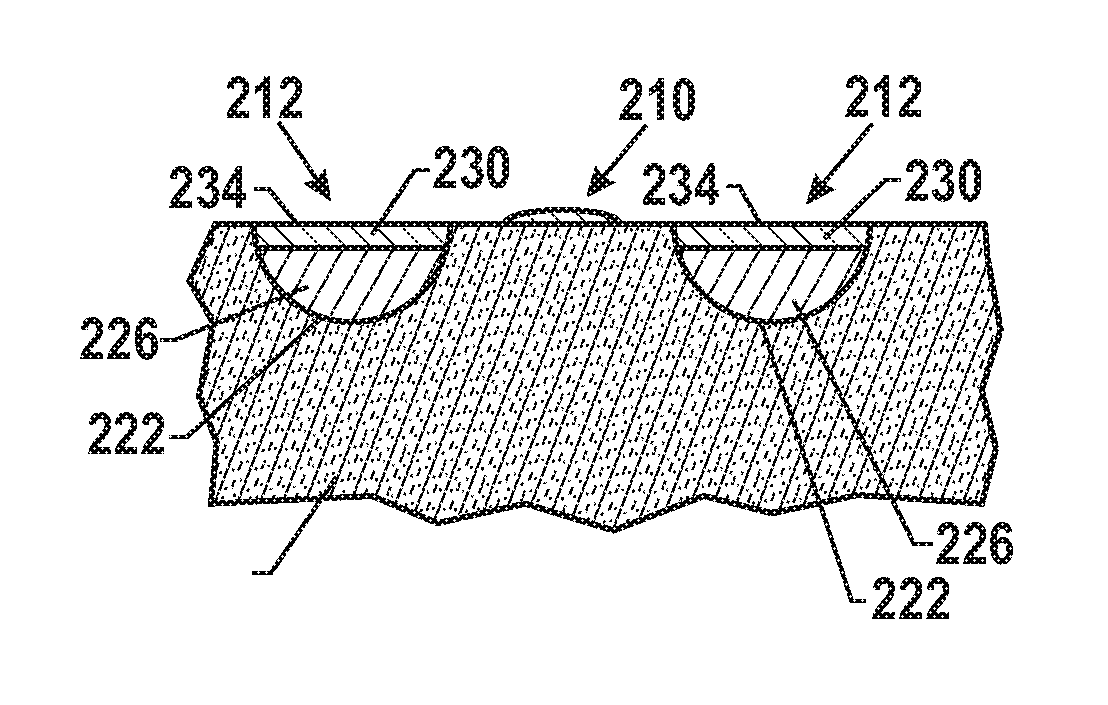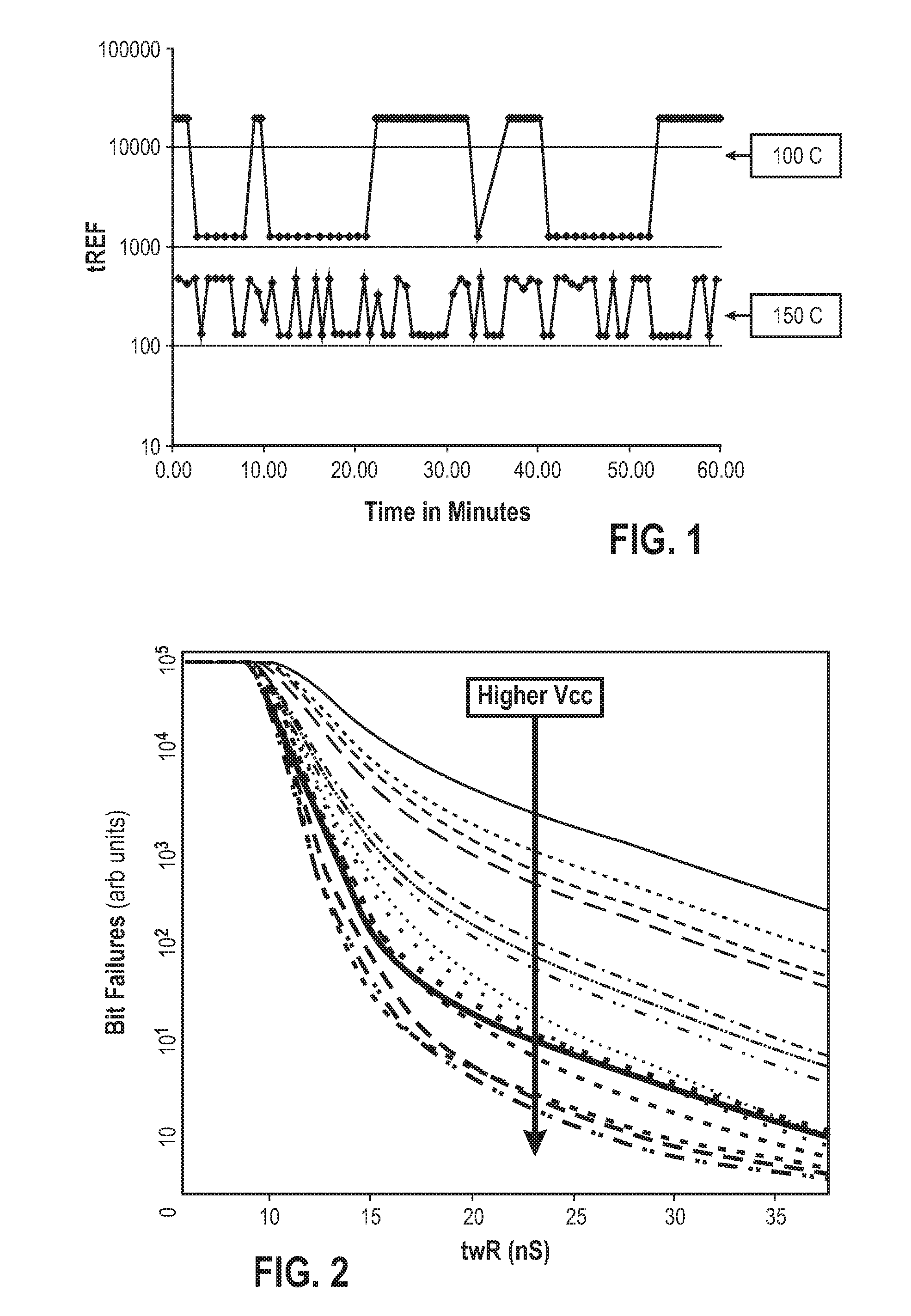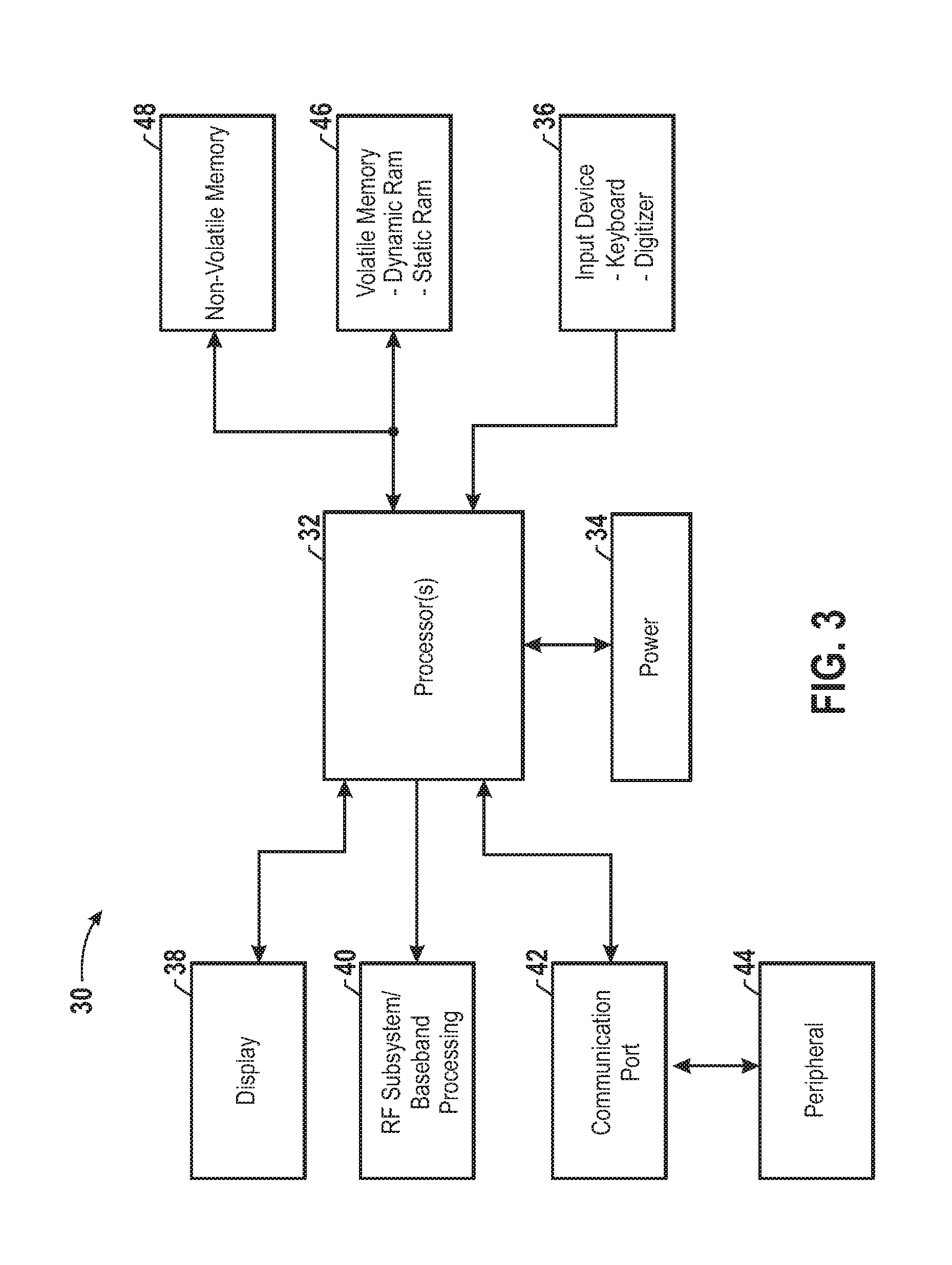Low power memory device with jfet device structures
a low-power memory and junction field effect transistor technology, applied in the field of memory devices and junction field effect transistor (jfet) device structures, can solve problems such as system crash, data loss, and reduced retention tim
- Summary
- Abstract
- Description
- Claims
- Application Information
AI Technical Summary
Benefits of technology
Problems solved by technology
Method used
Image
Examples
Embodiment Construction
[0026]In accordance with embodiments of the present in invention, there is provided JFET device structures which may be implemented in DRAM memory arrays. Specifically, improved JFET device structure that may be used as access devices are described. Embodiments of the present invention accentuate the low power consumption characteristics of JFETs without compromises to short channel effects. As will be discussed in greater detail below, specific embodiments of JFET structures that achieve these goals include providing an enhancement mode nJFET structure, an nJFET recessed structure, a Fin-JFET structure, a RAD-Fin structure, a cylindrical structure, and an elevated source and drain Fin structure.
[0027]Conventional junction field effect transistors (JFETs) and devices using conventional JFETs may have characteristics that may limit their use in computing and logic designs. For example, JFETs are essentially two PN-junctions and, thus, have a relatively low forward bias turn on voltag...
PUM
 Login to View More
Login to View More Abstract
Description
Claims
Application Information
 Login to View More
Login to View More - R&D
- Intellectual Property
- Life Sciences
- Materials
- Tech Scout
- Unparalleled Data Quality
- Higher Quality Content
- 60% Fewer Hallucinations
Browse by: Latest US Patents, China's latest patents, Technical Efficacy Thesaurus, Application Domain, Technology Topic, Popular Technical Reports.
© 2025 PatSnap. All rights reserved.Legal|Privacy policy|Modern Slavery Act Transparency Statement|Sitemap|About US| Contact US: help@patsnap.com



